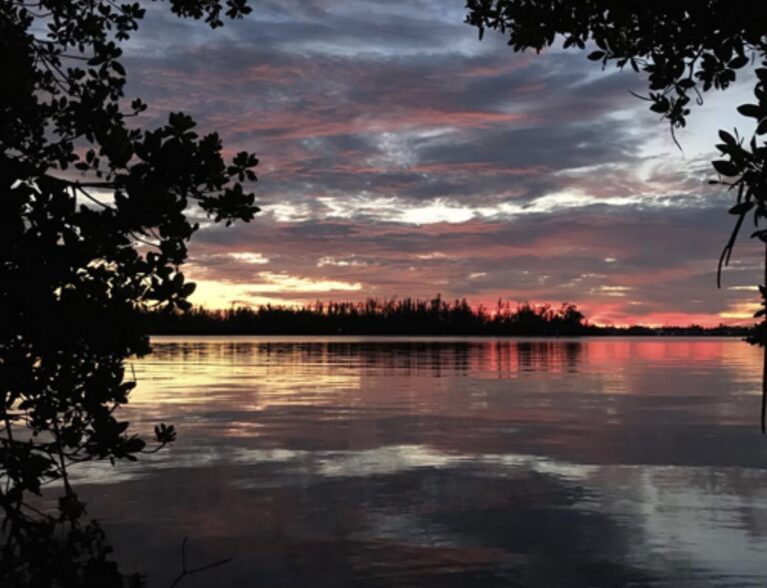
Indian River County’s decade-old rainy-season fertilizer ban may have curbed nutrient runoff into the lagoon in the first few years after it was put into force, but any improvement in water quality has long since “plateaued” and tougher measures to clean up the lagoon are now needed, according to researchers.
The county fertilizer ordinance, which was enacted with considerable fanfare in 2013, prohibits the residential use of nitrogen- or phosphorus-containing fertilizers during the rainy season from June 1 to Sept. 30.
“The initial overestimation of [nitrogen] contributions from residential fertilizers applications led to broad public support and the passage of numerous fertilizer ordinances along the Indian River Lagoon during the study period,” a study published by Florida Atlantic University researchers in the August issue of the scientific journal Marine Pollution Bulletin reads.
But Dr. Brian Lapointe, research professor at Harbor Branch Oceanographic Institute, now says his team of FAU scientists sampled water and macroalgae before fertilizer ordinances were enacted, and then again five years after implementation.
They then tested nutrient levels and for isotopes which allowed differentiation between the sources of nutrients. The FAU researchers found that rainy-season fertilizer blackouts have not been effective in reducing nutrient loads in the lagoon.
Indian River County’s stormwater educator and fertilizer enforcement officer, Alexis Peralta, says that throughout this period, she has been “sampling our canals so that I could see, over time, if we were reducing our nutrient load … I have results that show the trending line of the nutrient levels going down, particularly in those first four years after (the fertilizer ban) passed.”
“Our fertilizer ordinance actually seems to have made a difference,” she says. But Peralta concedes that improvement here as a result of the fertilizer ban has now “plateaued.”
The researchers said the fertilizer blackouts “ultimately diverted attention, efforts, and funds that potentially could have been more effective if allocated to reducing human waste impacts” from septic tanks.
“Fertilizer was the low-hanging fruit, but it’s not a catch-all,” Peralta agreed.
“It’s hard because fertilizer was the big, shiny thing to look at, which does create pinpoint focus on that one part – I have had residents always coming at me about the fertilizer,” Peralta says. “But it’s not just about fertilizer, this is just the first step that we all collectively took.
“It was never meant to be, ‘This is the only thing we have to do to fix the lagoon’s nutrient problem.’ I don’t think anyone who’s working on the lagoon has ever felt that. I think citizens take it out of context,” Peralta continued.
The FAU study highlights Brevard County’s Save Our Indian River Lagoon Project Plan for its multi-faceted effort to aid the waterway. The Indian River County Commission will vote on finalization of its own lagoon plan – devised by Tetra Tech, the same consultants who did Brevard’s plan – on Sept. 26.
A large portion of the conceptual projects within Indian River County’s plan include septic-to-sewer connections for nearly 6,000 homes throughout the county. Tetra Tech estimates septic-to-sewer hookups for 1,500 homes within 55 yards of water would remove nearly 10 times more nitrogen, per year, from the lagoon than fertilizer ordinances do.
Though these projects are split into groups, lumped together the cost per home of these septic to sewer conversions averages approximately $15,000.
The City of Vero Beach has led the way in getting barrier island residents, and mainland residents near the lagoon, hooked up to sewer lines via Septic Tank Effluent Pump or STEP systems.
Of Vero’s 1,500 septic systems, more than 600 or about 41 percent of eligible properties in the city limits, have already been converted from septic to sewer, and the program is expanding.
The septic-to-sewer connections are also necessary to comply with House Bill 1379, signed in May. According to the draft lagoon management plan, “all existing conventional septic systems in the Indian River Lagoon basin must connect to central sewer or upgrade to enhanced nutrient removal septic systems by July 1, 2030.”



